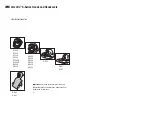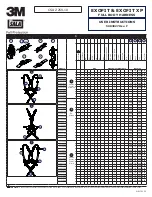
ISQ EC and ISQ EM Mass Spectrometer Preinstallation Requirements Guide
Page 24
CAUTION—Escape of Hazardous Substances from PEEK Capillaries
In the LC or IC system, capillaries made of PEEK may be used. Swelling or attack
by acids can cause PEEK capillaries to start leaking or to burst.
•
Certain chemicals, for example, trichloromethane (CHCl
3
), dimethyl
sulfoxide (DMSO), or tetrahydrofuran (THF) can cause PEEK to swell.
•
Concentrated acids, such as sulfuric acid and nitric acid, or a mixture of
hexane, ethyl acetate, and methanol, can attack PEEK.
•
Swelling or attack is not a problem with brief flushing procedures.
•
For more information, refer to the technical literature on the chemical
resistance of PEEK.
CAUTION
Fused silica is used in flow cells and capillaries. To avoid personal injury always
wear safety glasses when handling fused silica tubing, for example, when cutting
fused silica tubing to length.
CAUTION—Allergic Reaction
Some capillaries in the HPLC system are made of MP35N™, a nickel-cobalt based
alloy. Individuals with sensitivity to nickel/cobalt may show an allergic reaction
from skin contact.
CAUTION—Sparking due to Electrostatic Discharge
Liquid flowing through capillaries can generate static electricity. This effect is
particularly present with insulating capillaries and non-conductive solvents (for
example, pure acetonitrile). Discharge of electrostatic energy might lead to
sparking, which could constitute a fire hazard. Prevent the generation of static
electricity near the chromatography system.
















































